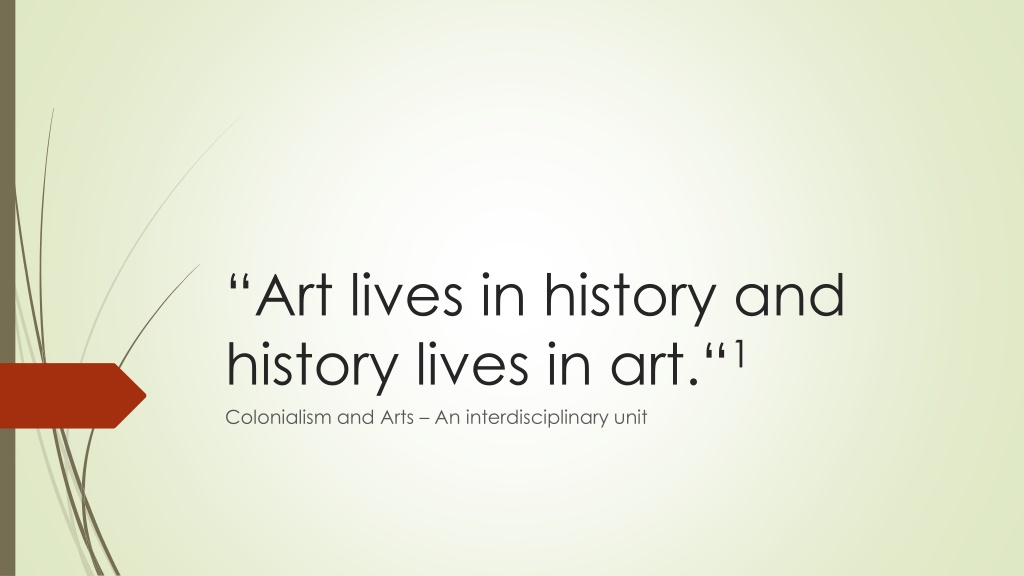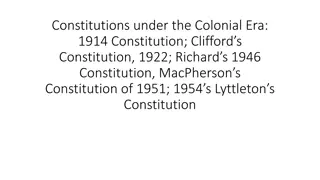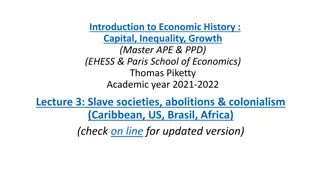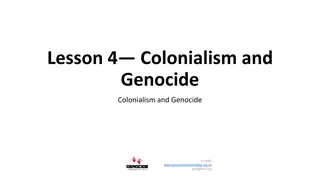Understanding Colonialism through Art: Lesson in History and Ideology
Explore the interdisciplinary unit on colonialism and art, delving into historical events, speeches, and theoretical perspectives presented through visual aids. Analyze speeches, discuss key arguments, and identify persuasive strategies employed in justifying British Empire actions through Chamberlain's rhetoric.
Download Presentation

Please find below an Image/Link to download the presentation.
The content on the website is provided AS IS for your information and personal use only. It may not be sold, licensed, or shared on other websites without obtaining consent from the author. Download presentation by click this link. If you encounter any issues during the download, it is possible that the publisher has removed the file from their server.
E N D
Presentation Transcript
Art lives in history and history lives in art. 1 Colonialism and Arts An interdisciplinary unit
Lesson 3: Colonial Ideology Read the background information at the top of the speech. Ask any questions that might arise due to the historically distant event or because of language. What do you expect of the content of the speech? A Meeting of the Royal Colonial Institute at Prince's Hall. Sir F. Napier Broome, K.C.M.G., Reading a Paper on Western Australia. An original print from the Graphic Illustrated Weekly Magazine, 1885. Royal Colonial Institute.
Lesson 3: Colonial Ideology Read the speech and look up any words you do not understand with a (digital) dictionary. Structure the speech into different parts and write a couple of notes in your own words for each of them. Compare your notes with a partner. Check if you both chose the same information and if you understood the passages correctly. If the information differs a lot, discuss which result fits better.
Lesson 3: Colonial Ideology Work out the theoretical basis on which Chamberlain argues, e.g. his line of argumentation. How does he justify the actions of the British Empire? Identify key phrases and sentences that you find particularly persuasive or problematic and give their lines as proof. Tip: There are three main arguments in his speech.
Lesson 3: Colonial Ideology We have already worked through the structure and the argumentation of the speech, the intention is also clear. The goal of our analysis is therefore to understand and explain, how Chamberlain tries to convince the audience other than on a logical level, e.g. filtering out his rhetorical strategies (as opposed to only the rhetorical devices). Get together in groups of 2-3 students and look at the text snippets. Bring them in order to get the four strategies with their respective explanations and text examples.























